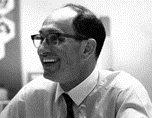ADAPT Program (Accent on Developing Abstract Processes of Thought)

Physics Teaching and the Development of Reasoning: Workshop Materials
Date of this Version
1975
Document Type
Article
Abstract
Most physics teachers think about their courses in terms of topics covered, concepts explained, and principles applied. Our effort in this workshop has been to call your attention to another impartant dimension of physics teaching: your students' patterns of reasoning. By this time, you have probably concluded that most physics courses are addressed primarily to students who can use formal reasoning patterns with ease, and we would agree with that. Yet there are also the students who use formal reasoning patterns only with difficulty and in limited areas. To help you analyze course content and present it in a way that will be understandable to more of your students, we suggest that you classify physics concepts according to the reasoning patterns necessary to understand the meaning you wish to communicate. Concepts may then be called “concrete " or "formal," in analogy to the stages of reasoning. This module presents examples and explanations of "concrete" and "formal" concepts and is arranged in the form of a learning cycle built around that distinction.


Comments
Copyright © 1975 American Association of Physics Teachers. Used by permission.